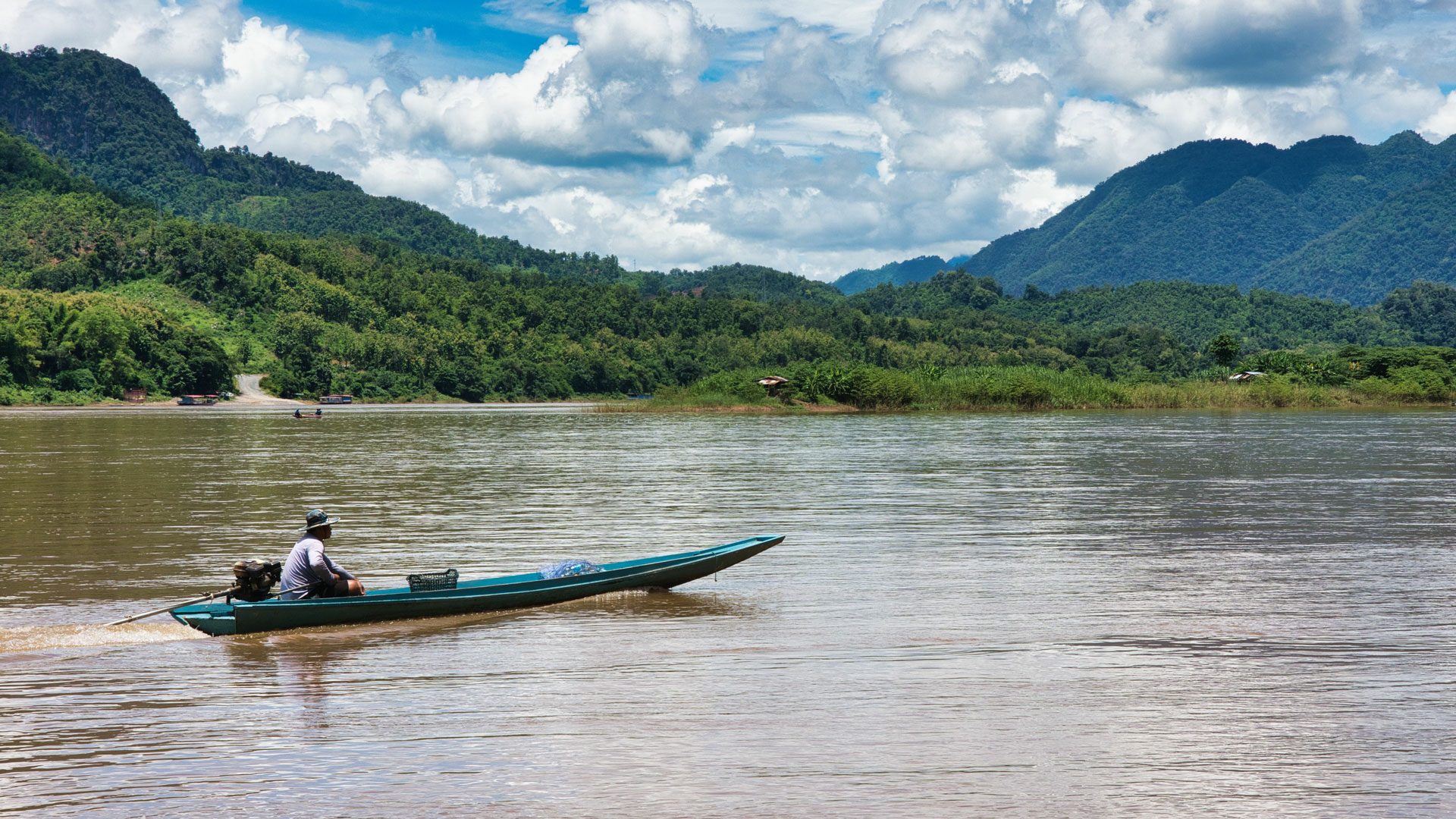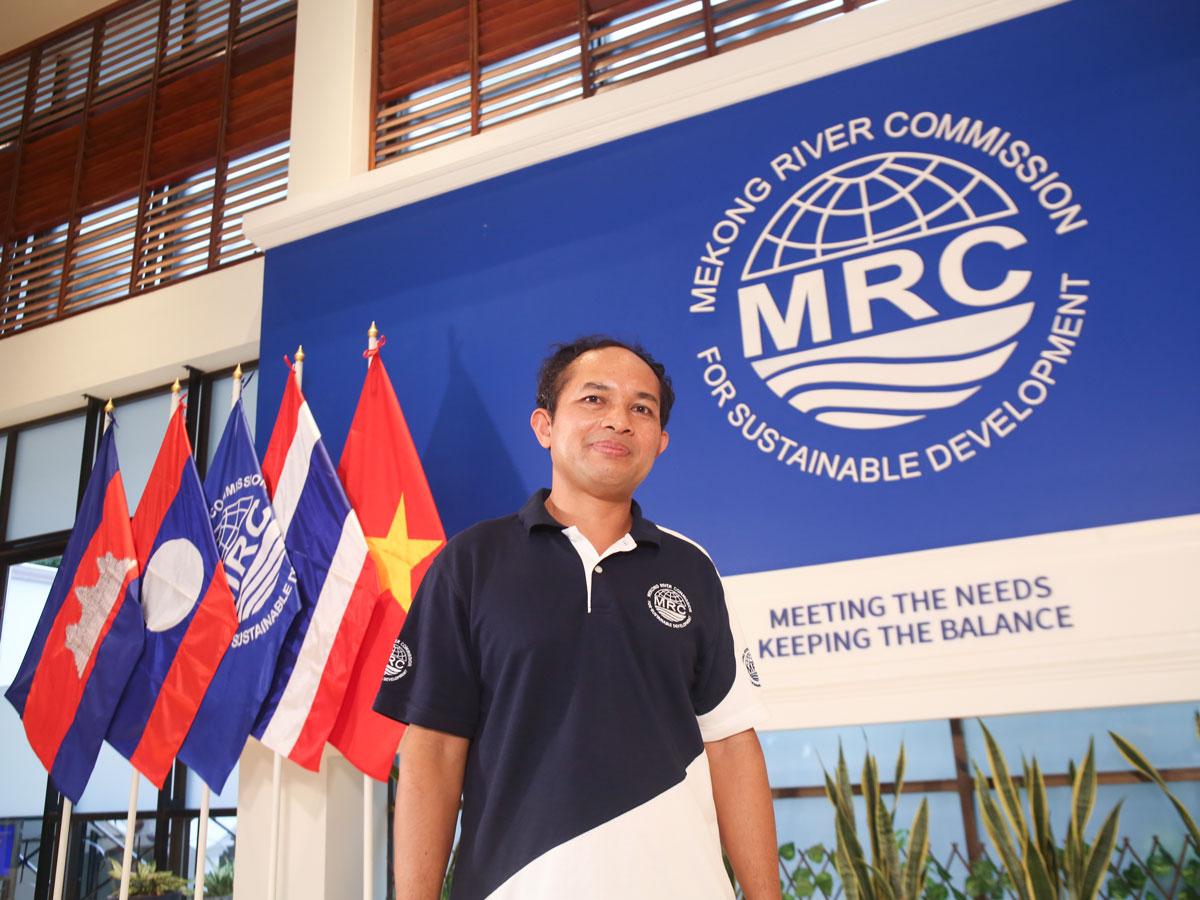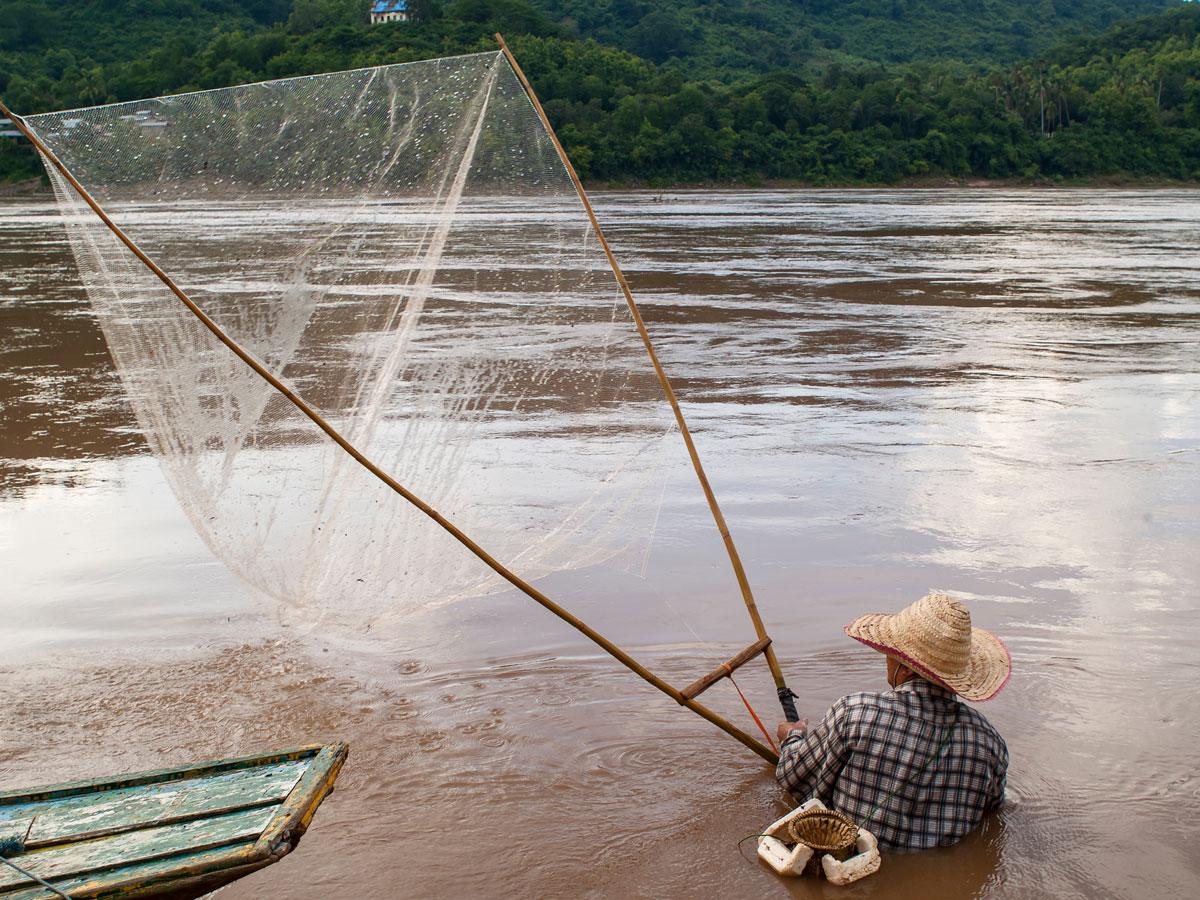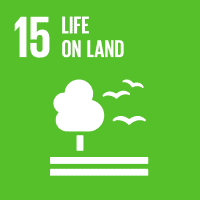
Ebb and flow
The Mekong River is a lifeline for millions of people in South-East Asia. In times of climate change, riparian countries are working hand in hand for sustainable use of the ecosystem – with Germany’s support.

The banks of the Mekong River are fertile ground for vegetation. And so Sarann Ly has to trudge through dense undergrowth to get to his measuring station on the outskirts of Vientiane, the capital of the Lao PDR. The simple cabin, covering just over one square metre, is nestled between wild banana trees and a proliferation of mimosa branches. Inside hangs a box with a car battery and three devices wired to each other. These are used to measure and record the level of the river and the current rainfall. ‘The data is automatically transmitted to a central server via mobile network,’ explains Sarann. ‘So we can keep an eye on what’s going on at all times.’
The 43-year-old scientist is Chief Hydrologist of the Mekong River Commission (MRC). This intergovernmental organisation is committed to the river’s sustainable development. Its work is supported by the Deutsche Gesellschaft für Internationale Zusammenarbeit (GIZ) GmbH on behalf of the German Development Ministry.
Sarann’s measurements, taken at around 70 locations along the Lower Mekong Basin, are vitally important: in Lao PDR, Thailand, Cambodia and Viet Nam, this huge river is a lifeline for around 70 million people. They use the water from the river to irrigate their fields, and earn a living from the fish they catch. Sarann’s data is useful for alerting local residents early on of floods and droughts and detecting changes in the ecosystem.

The readings have been giving cause for concern for some time. The Mekong River has had considerably less water than usual in the past four years, having fallen to the lowest levels in more than 60 years. The governments of riparian states called for water conservation measures to be taken and had to significantly reduce the use of river water for the irrigation of fields. This led to a substantial decline in the rice harvest.
Accurate data on the volume of water
Two developments in particular are causing problems for the Mekong River: changes in precipitation as a result of climate change and the multitude of dams that have been built on the river and its tributaries in recent years. ‘It’s not been possible to date to say precisely which factor bears most heavily,’ says Sarann, as he climbs down stone steps covered in leaves and broken branches to reach the riverbed, where he’ll check the water level sensor floating in the river. ‘That’s why it’s extremely important to collect accurate data – so that we can respond accordingly.’
The Mekong River Commission is playing a crucial role in the attempt to improve the situation for the Mekong River. It was founded in 1995 by the riparian countries Thailand, Viet Nam, Cambodia and Lao PDR. The organisation has set itself the goal of jointly managing the water resources and achieving a balance between economic, social and environmental interests. It develops joint plans to deal with droughts and floods as well as early warning systems for the local population and devises strategies for the exchange of information. In addition, it establishes requirements to ensure environmentally friendly use of hydropower.
At the same time, MRC is committed to improving cooperation with China – a key stakeholder on the Mekong, but not a member of the organisation. Around half of the Mekong, which is more than 4,300 kilometres long, lies in China.
Even coordinating and finding a common denominator for the differing positions of the MRC member countries is a highly complex undertaking. According to Thim Ly, Chief River Basin Planner at MRC, it generally takes several years to reach agreement on individual matters. However, as he points out, the often drawn-out process of negotiation is unavoidable: ‘No country is going to implement a strategy that runs counter to its own interests.’
Barbara Schweiger, who is responsible at GIZ for cooperation with the Commission, agrees. She is nevertheless convinced that this is the right way forward: ‘As a transboundary platform, MRC is empowered to create transparency and thereby encourage dialogue between the countries.’
This is especially important given the rapid expansion in hydropower. Just two decades ago, there were only 17 hydropower projects in the Lower Mekong Basin, with a capacity of less than 1,400 megawatts. By 2021, there were already 88 plants operating, including two on the main Mekong River, with a total capacity of 12,600 megawatts. This is predicted to more than double once again by 2040. A similar trend can be observed in the river’s upper reaches in China: On the main river alone, 11 hydropower plants – two of these large-scale storage power plants – are already in operation and another 11 are in the pipeline.

The power plants impede the natural watercourse and can exacerbate droughts if large volumes of water are stored upstream. China, in particular, has attracted criticism for years for exploiting its geographical advantage to the detriment of the other countries through which the river flows. At the same time, the dams prevent the passage of sediments rich in nutrients, which are a source of food for the fish. The route of migratory fish is also disrupted by the power plants – which threatens the fish stock.
Environmental impact study
In order to better understand the impacts, MRC has launched a detailed investigation of two relatively new hydropower projects with GIZ support. The analysis of the water flow, water quality, sediment transport and fish stocks around the Don Sahong and Xayaburi dams is intended to fully capture the environmental consequences for the first time. The project aims to increase transparency – and to establish monitoring methods and standards for hydropower plants to be observed by all operators along the Mekong in the future.

MRC Chief Hydrologist Sarann is confident that a joint approach can be found here too. Born in Cambodia, he grew up along a tributary of the Mekong, south of the city of Siem Reap, the tourist gateway to Angkor Wat. In his younger years, he wondered why the plentiful water during the rainy season was not stored to irrigate the fields in the dry season. Such water storage facilities are now commonplace. ‘Today we face new challenges,’ says Sarann, referring to the problems of South-East Asia’s lifeline. ‘However, we’ve no other choice but to find answers to them.’



